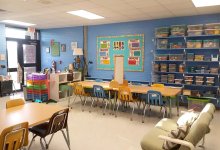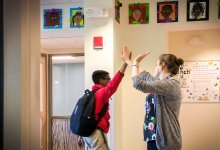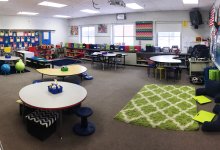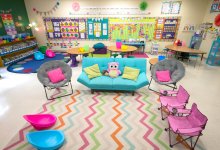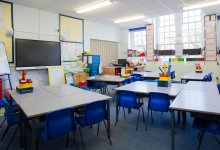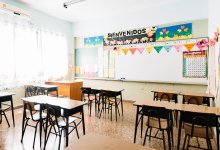Learning Environments
Learning is enhanced by the space where it happens. Discover how to make a difference by optimizing seating arrangements, classroom decor, and even building design.
Research-Based Tips for Optimal Seating Arrangements
The right approach to seating works behind the scenes to keep students focused on learning while minimizing disruptions, research suggests.The Sensory Room: Helping Students With Autism Focus and Learn
Imagine a safe space where students with autism can go to calm their bodies and then get back to the business of learning.20.7MYour content has been saved!
Go to My Saved Content.11 Smart Student Desk Layouts
How classroom seating—from traditional rows to Socratic circles and L-shaped clusters—alters classroom dynamics and shapes learning outcomes.Dos and Don’ts of Classroom Decorations
What you put on your classroom walls can affect your students’ ability to learn.8 Proactive Classroom Management Tips
New teachers—and experienced ones too—can find ideas here on how to stop disruptive behavior before it begins.1.6MYour content has been saved!
Go to My Saved Content.4 Classroom Design Tactics to Motivate Students
Teachers can make small shifts in their classroom design to boost engagement, spark curiosity, and celebrate success.Flexible Classrooms: Research Is Scarce, But Promising
An ambitious study of 153 classrooms in the United Kingdom provides the best evidence that flexible spaces can boost academic performance.956.6kYour content has been saved!
Go to My Saved Content.7 Outstanding K–8 Flexible Classrooms
K–8 educators from across the country give you a peek at their classrooms—and explain how they managed the transformations.971.2kYour content has been saved!
Go to My Saved Content.27 Ways to Optimize Your Classroom Design for Better Learning
A research-based lineup of smart, effective classroom design tips that support deep learning, reduce distraction, and build belonging.The 10 Most Significant Education Studies of 2020
We reviewed hundreds of educational studies in 2020 and then highlighted 10 of the most significant—covering topics from virtual learning to the reading wars and the decline of standardized tests.477.6kYour content has been saved!
Go to My Saved Content.Classroom Design Essentials for Educators
A collection of our popular articles and videos on budget-friendly, research-backed ways to set up your classroom—and how to keep students, spaces, and SEL in mind.129.7kYour content has been saved!
Go to My Saved Content.4 Ways Classroom Design Impacts Executive Functioning
Effective classroom design can help elementary students develop skills like organization and task initiation.230.6kYour content has been saved!
Go to My Saved Content.The Science of Classroom Design
Our comprehensive, all-in, research-based look at the design of effective learning spaces.The Social and Academic Benefits of Team Sports
Team sports are about so much more than their physical benefits. This is especially so when group sports activities are incorporated into a young person’s life.505.9kYour content has been saved!
Go to My Saved Content.7 Zones Every Middle School Classroom Should Have
Setting up and organizing a classroom environment with more intention can help maximize the space for student engagement—and learning.122.6kYour content has been saved!
Go to My Saved Content.


